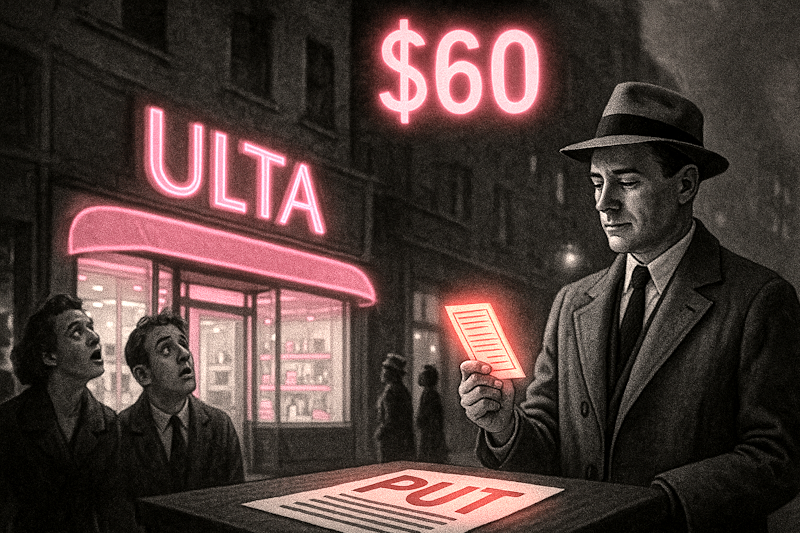JOIN ME LIVE AT 9 AM ET FOR: TRENDING THURSDAYS
I get asked about the covered call strategy more than any other topic, and I believe it’s because most traders approach it in the wrong order.
They focus on strike selection, premium collection and expiration dates before addressing the most essential question: Do you want to continue to own the shares?
That one question should drive every decision you make with covered calls and once you’re clear on it, the entire strategy becomes mechanical.
The Two-Path Decision Tree
Here’s how I view it. If you want to hold onto your shares, you sell out-of-the-money covered calls at 10-20 delta strikes. This approach delivers income while still leaving room for price appreciation if the stock climbs higher.
If you’re willing to let your shares go, you sell at-the-money or in-the-money calls to maximize your chance of assignment while collecting premium.
Consider a position I’m working with—I own shares at $120 and they’re trading around $178. Since I intend to hold, I sold the $170 call for an $11.40 credit. That lowers my cost basis to about $109 while still giving the stock room to climb another $8 before assignment.
The key is to remain disciplined in your intention. Don’t switch strategies mid-trade out of greed or fear.
When and How to Roll for Maximum Income
I usually roll for credits only. I’ll only consider paying a debit to roll when the numbers still yield a net profit over the life of the trade.
For example, if I pay a $4 debit to roll but gain an extra $6 in profit potential, that still nets a $2 gain. But I’m not rolling merely to dodge assignment if it costs me money.
A collar trade offers the best of both worlds — you can still collect premium, lower your cost basis and gain downside protection by buying puts while selling calls. It creates a net credit that safeguards you on both sides.
At today’s market levels, I lean toward strikes closer to the money to maximize income. Yes, there’s a higher assignment probability but that’s the trade-off for better premium collection in such an extended market.
The bottom line: answer that first question honestly, then execute mechanically. Don’t overthink it and don’t let emotions drive your strike selection.
I’ll see you in the markets.
Chris Pulver
Chris Pulver Trading
Follow along and join the conversation for real-time analysis, trade ideas, market insights and more!
- Telegram:https://t.me/+av20QmeKC5VjOTc5
- YouTube:https://www.youtube.com/@FinancialWars
- Twitter:https://x.com/realchrispulver
- Facebook: https://facebook.com/therealchrispulver
Important Note: No one from the ProsperityPub team or Chris Pulver Trading will ever contact you directly on Telegram.
*This is for informational and educational purposes only. There is inherent risk in trading, so trade at your own risk.
P.S. If It Feels Quiet, That’s Usually a Signal
Every major market move follows the same cycle, and if you don’t know what stage we’re in…
You’re playing a dangerous game. Take a look at this chart:

Most traders only wake up during the markup phase, when prices are flying and headlines are bullish.
That’s when the emotional buying starts…
And it’s also when Wall Street is already preparing to distribute their shares, leaving retail traders holding the bag.
But what if you could spot the accumulation phases, before the rest of the market catches on?
That’s exactly what I revealed in my latest briefing…
How to use these “pinch point” setups to anticipate the next breakout, not chase it.
The next breakout candidate is already consolidating quietly…
Naturally, I cannot promise future returns or against losses…
But it’s only a matter of time before the smart money catches on.



